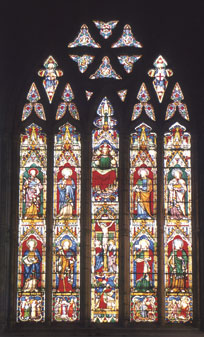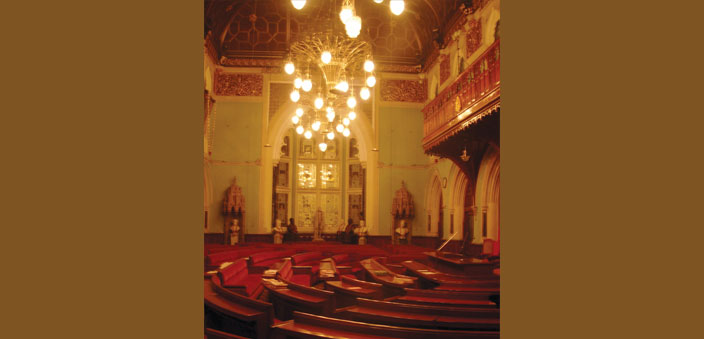IThe character of any city is reflected by its architectural and cultural heritage. In Mumbai we have varied styles of architecture as Mumbai was initially developed as an organic trade town. As Mumbai comprised seven islands, its developments as a city was restricted until late 19th century. People of different communities settled down in distinct areas, creating distinct identities, precincts – Khotachiwadi, Matharpakady – are examples of this. The commercial areas grew in and around Flora Fountain in Fort, close to the harbour. The residential areas grew at Byculla, Parel and Girgaum, after the great fire of 1803, in the area of the docks. With passage of time, the Neo Classical gave way to Victorian or Neo Gothic, followed by Palladian or Neo Renaissance, Indo-Sarcenic and finally, Art Deco buildings, and today we have tall towers changing the sky line of the city.

INTACH, the country’s premier heritage organisation, was set up in 1984 to work towards the preservation of our culture and heritage. Set up in 1997, INTACH Mumbai Chapter has worked and continues to work with the Municipal Corporation of Greater Mumbai (MCGM), ASI (Archaeological Survey of India) and MTDC (Maharashtra Tourism Development Corporation), to restore, conserve and revitalise heritage structures in the city.
The first list
In mid 1980s, INTACH Mumbai prepared the very first listing of important heritage buildings in the city. This was updated in 1988. In 1992, the Government of Maharashtra notified a draft list based on this listing, and in 1995, it was legislated, making Mumbai the first city in country to have a heritage listing. The biggest threat to our heritage is neglect, ignorance and lack of mantainence. Listing unprotected buildings of architectural, historical, archaeological and aesthetic importance is the first step towards knowing what we have and towards planning, formulating and implementing policy and plans to conserve them. The inventory and site listings are also critical for preparing heritage legislation and control guidelines for the protection of the built form of the city. INTACH Mumbai was a founding member of the MMRDA (Mumbai Metropolitan Region Development Authority) Heritage Society that has prepared detailed listing and guidelines for all heritage precincts in the city. It has prepared detailed listings and guidelines for Cumballa Hill precinct and the entire Matheran hill station. It formulated the first guidelines for the protection of eco sensitive hill stations.
Mumbai’s world heritage sites
Mumbai has two World Heritage sites. The Elephanta Caves were declared a World Heritage Site in 1987. As per covenants and convention of UNESCO (United Nations Educational, Scientific and Cultural Organisation), World Heritage Sites require a comprehensive management plan. In 1996, UNESCO had threatened to delist the Elephanta site due to poor management. In 1997, INTACH held the very first conference on World Heritage sites in the country in which UNESCO, English Heritage and the World Heritage Centre in Paris participated. That resulted in ASI entrusting the task of preparing the Comprehensive Development Plan to INTACH in 1998. The site was a mess and INTACH created the first site museum in the country there, despite the odds of working on an island with no electricity. Unfortunately, 17 years later, the ASI has simply locked up the museum and has not maintained it. The site is riven by petty local politics and has proved difficult to improve and manage.
The detailed infrastructure upgradation plan for Elephanta Caves and island prepared by INTACH Mumbai, recommends augmentation of facilities for visitors and various improvements, keeping in mind the World Heritage status and covenants. The recommendations outlined by INTACH include proper documentation and conservation of the caves, improvements to the jetty, installation of toilets at the base of the steps, and an alternative route providing a separate access and exit route to and from the caves, to de-congest the steps. A cultural village which will accommodate the informal sector along the steps has been suggested. The stalls will be appropriately designed to blend with the natural and heritage environment. This will enhance the visitor experience of the place and provide better employment conditions for the local people. Signage, garbage receptacles and resting spots will be installed at appropriate locations along both the new pathway (i.e., the entrance access) and the old steps (the exit route). The plan would considerably improve the visitor experience.
INTACH Mumbai prepared the dossier for nomination of Chhatrapati Shivaji Terminus (CST) as a UNESCO World Heritage site in 2003 at the behest of the Railways. The same was conferred by UNESCO in 2004. CST has been selected as an icon for Swachh Bharat Abhiyan,an initiative of the Prime Minisiter’s for 10 iconic sites in India. Central Railways have invited INTACH to repair and restore the South and West façade of the Chhatrapati Shivaji Terminus. A concept master plan for revitalisation of the area abutting and surrounding the periphery of CST has been submitted to the A ward, MCGM. The plan proposes a walking plaza at the southern entrance to CST where currently the buses are parked, and lamps, boulards, designed with heritage characteristics. CST has also requested INTACH to upgrade its existing site museum.
The Bhau Daji Lad Museum restoration
The Dr. Bhau Daji Lad Museum, is a premier instituition and one of the five must-visit places in the city of Mumbai. The second oldest museum in the country, it was in a state of neglect and disrepair. In 2003, a tripartite agreement was signed between MCGM, the owner of the museum, Jamnalal Bajaj Foundation, who donated the seed money for the restoration, and INTACH, which provided the expertise for the restoration and running of the Museum. It is for the first time in the country that a management trust has been set up with a PPP model to run a museum. The restoration team was led by Tasneem Mehta, Vice Chairman, INTACH, and Convenor, Mumbai Chapter, who prepared the concept, display design and curation for the Museum as Project Director, Vikas Dilawari, the Conservation Architect, worked on restoring the building. Conservators from INTACH’s Indian Council of Conservation Institute, restored over 4,000 objects of the museum. Tasneem Mehta designed and upgraded the showcases and the display, besides the lighting and the spatial layouts. The work included retrieval of lost skills such as gold gilding and stenciling, selecting the colour scheme and designing of lighting fixtures including the chandelier, spatial re-organisation, and creating a story for the display of objects. The restoration won UNESCO’s highest Award of Excellence for Asia Pacific Region in 2005.
The Royal Opera House has recently been restored to its former glory. We need many more such owners of heritage buildings to take pride in their properties. There is a need to create a civic movement for awareness and pride to save our heritage. We need many city festivals that showcase different aspects of our culture and reinforce civic pride. Heritage should be taught and propagated at the school and college level, instilling a will to preserve and conserve our past. Towards this, INTACH Mumbai organises several educational programmes and competitions, including an annual quiz and a FilmIt programme with schools, where children create films on the heritage of the city. These films are shared with school children across India and England. This programme is held in collaboration with the Helen Hamlyn Trust in UK.

Several heritage sites and monuments in the city have been encroached upon. The government needs to take steps to curb further damage to these sites. Incentives like concession in property tax and lease renewal, setting up a special fund to partner repairs along with providing loans at lower rates of interest for restoration and preservation of heritage buildings, are some recommended initiatives that could be considered. A cultural policy is required that can outline financial incentives to corporates who contribute towards this fund. These funds could help to meet this urgent need of looking after the protected built heritage.
Currently, INTACH Mumbai Chapter is working on the conservation and cleaning of Flora Fountain, one of the iconic landmarks of the city, and cleaning of the marble bas reliefs of the Wellington Fountain at the Regal cinema circle. INTACH Mumbai, for the first time in the city, revived the restoration of stained glass in the city at Afghan Church in 2001, restored the fire damaged Corporation Hall of the MCGM located at the head office in 2000, opened up the Gateway of India plaza in 2008, among several restoration projects of important iconic monuments in the city.


 [/column]
[/column]